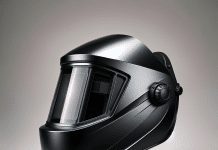In this article, you will find quick and easy solutions to some common problems that you may encounter with your welding helmet. Whether it’s a flickering auto-darkening lens or a faulty headgear, we’ve got you covered. We will guide you step-by-step through troubleshooting techniques that will help you get back to work in no time. So, grab your tools and get ready to fix those welding helmet woes!
Review contents
Problems with Helmet Power
Helmet not turning on
If you’re facing the frustrating issue of your welding helmet not turning on, there are a few possible causes to consider. First, ensure that the battery is properly installed and charged. If the battery is indeed charged, check the power switch and make sure it is in the correct position. Additionally, inspect the wiring and connections for any signs of damage or loose connections. If all else fails, it might be time to replace the battery or seek professional assistance to diagnose and fix the issue.
Helmet turns off unexpectedly
If your welding helmet turns off unexpectedly during use, it can interrupt your work and compromise your safety. One common cause of this issue is a loose or faulty battery connection. Ensure that the battery is securely in place and that the terminals are clean and free of corrosion. Another possible cause could be a malfunctioning power switch or circuitry. It is best to refer to the manufacturer’s manual or seek professional help to diagnose and resolve this issue.
Battery life issues
Having battery life issues with your welding helmet can be frustrating, especially if it constantly needs to be recharged or replaced. To prolong the battery life, consider turning off the helmet when not in use or utilizing any auto-off features that may be available. Additionally, ensure that the battery contacts are clean and free from corrosion, as this can affect the efficiency of the battery. If the problem persists, it might be worth considering upgrading to a helmet with a longer battery life or seeking professional assistance to investigate the issue further.
Problems with Helmet Sensors
Sensors not responding
When the sensors on your welding helmet fail to respond, it can compromise your safety and productivity. One common issue that can cause this problem is blocked or dirty sensor lenses. Make sure to regularly clean the sensors with a soft, lint-free cloth to ensure optimal performance. Another possibility is that the sensors are being obstructed by welding spatter or debris. Clean the welding area and remove any obstructions that could be affecting the sensor’s ability to detect light. If cleaning and clearing the sensors do not solve the problem, it may be necessary to consult the manufacturer’s manual or seek professional assistance.
Sensors triggering too easily
If your welding helmet sensors are overly sensitive and trigger even with minimal light exposure, it can be frustrating and lead to unnecessary darkening. One possible cause of this issue is the sensor’s sensitivity settings. Some helmets provide the option to adjust the sensor sensitivity, so refer to the manufacturer’s manual to see if this feature is available and how to adjust it accordingly. Additionally, make sure that the sensors are clean and free of any dirt or debris that could interfere with their performance. Should the problem persist, consider reaching out to the helmet manufacturer or seeking professional assistance.
Sensors not triggering at all
On the other hand, if your welding helmet sensors are not triggering at all, it can be a cause for concern as it compromises your safety. First, check the battery to ensure that it is adequately charged and supplying power to the sensors. Next, examine the lens for any scratches or damage that could be obstructing the sensor’s ability to detect light. If the battery and lens are in good condition, it is advisable to consult the manufacturer’s manual or seek professional assistance to diagnose and address this issue properly.
Lens Problems
Scratched lens
A scratched lens can significantly impact your visibility and compromise the quality of your welding work. If you notice scratches on your helmet lens, it is recommended to replace the lens as soon as possible. Fortunately, most welding helmets have replaceable lenses that are easily interchangeable. Refer to the manufacturer’s manual to determine the appropriate lens type and replacement procedure for your specific helmet model. By promptly replacing a scratched lens, you can ensure clear visibility and maintain the integrity of your work.
Foggy lens
A foggy lens can impair your vision and make welding difficult and unsafe. Several factors can contribute to a foggy lens, including high humidity, temperature differences, and inadequate ventilation. To prevent fogging, consider investing in a helmet that features an anti-fog coating on the lens. Additionally, ensure that your work area is properly ventilated to promote air circulation. If your current helmet does not have anti-fog capabilities, you can purchase anti-fog solutions or wipes specifically designed for welding lenses. These products can help minimize fogging and ensure clear visibility while working.
Darkening filter not working
If the auto-darkening feature of your welding helmet is malfunctioning, it can lead to eye strain and compromise your safety. One potential cause of this problem is an exhausted or faulty battery. Check the battery and replace it if necessary. Another possibility is that the sensors or the circuitry responsible for the auto-darkening function are damaged or defective. In such cases, it is advisable to refer to the manufacturer’s manual or seek professional assistance to diagnose and address the issue properly. Remember, a properly functioning darkening filter is crucial for protecting your eyes from harmful welding arc radiation.
Headgear Issues
Helmet not fitting properly
A welding helmet that does not fit properly can cause discomfort, compromise your visibility, and impact the effectiveness of its safety features. If your helmet feels loose or unstable, check the headgear adjustments and straps. Make sure they are correctly positioned and securely fastened. If there is excessive play or difficulty in achieving a proper fit, consider seeking a replacement headgear or consulting the helmet manufacturer for guidance. A well-fitting helmet ensures comfort and stability, allowing you to focus on your welding tasks without distractions.
Headgear discomfort
If you experience discomfort while wearing your welding helmet, it can hinder your productivity and cause unnecessary strain on your neck and head. One possible solution is to adjust the headgear according to your specific comfort requirements. Experiment with different adjustments such as strap tightness, headband width, and vertical position until you find a configuration that suits you best. Additionally, consider investing in headgear with additional padding or ergonomic features designed for enhanced comfort. If discomfort persists, it may be worth consulting welding forums or seeking professional guidance to address the issue effectively.
Headgear adjustments not holding
If your welding helmet’s headgear adjustments do not hold their position and constantly need readjusting, it can be frustrating and compromise the helmet’s fit and stability. First, examine the headgear mechanism for any signs of damage or wear. Sometimes, the locking mechanisms can become worn over time and may require replacement. If the headgear adjustments are in good condition, yet the helmet still does not hold its position, it is advisable to consult the manufacturer’s manual or reach out to the manufacturer directly for guidance. Additionally, welding forums or professional assistance can provide valuable insights and solutions.
Helmet Leaks
Air leaks
Air leaks in your welding helmet can be uncomfortable and compromise its effectiveness in protecting you from fumes, sparks, and particles. To identify air leaks, inspect the seals and gaskets around the helmet, paying particular attention to the areas where the helmet shell meets the face shield and headgear. If you notice any gaps or visible damage, it may be necessary to replace the seals or gaskets to ensure a proper seal. Additionally, consult the manufacturer’s manual for any specific guidance on maintaining and repairing the seals. A well-sealed helmet provides a safer and more comfortable welding experience.
Light leaks
Light leaks in your welding helmet can be distracting, potentially compromising your visibility and eye protection. First, check the lens for any cracks or damage that could be causing the light leaks. If the lens is in good condition, inspect the helmet shell for any visible gaps or openings that could be allowing light to enter. Adjust the headgear and straps to ensure a snug fit that minimizes light leaks. If the problem persists, consider contacting the helmet manufacturer or seeking professional assistance to address the issue effectively.
Problems with Auto-Darkening Filter
Delayed darkening
If your welding helmet’s auto-darkening filter does not darken promptly after striking an arc, it can expose your eyes to harmful radiation. One possible cause of delayed darkening is inadequate sensor sensitivity. Adjust the sensor sensitivity levels according to your welding environment and personal preferences as suggested in the manufacturer’s manual. Additionally, check for any obstructions or residue that could be affecting the sensor’s performance and clean them if necessary. If the issue persists, it is advisable to reach out to the manufacturer or seek professional assistance to ensure your auto-darkening filter functions as intended.
Filter too dark or too light
When the auto-darkening filter in your welding helmet is either too dark or too light even after adjusting the settings, it can affect your ability to see clearly and work effectively. First, ensure that the lens is clean and free from any residue or debris that could be interfering with the darkening process. Additionally, check the battery level and replace it if necessary, as a low battery charge can sometimes affect the filter’s performance. If the problem persists, consult the manufacturer’s manual for specific troubleshooting steps or seek professional assistance to address this issue and ensure optimal filter performance.
Filter not responding to light changes
If your welding helmet’s auto-darkening filter does not seem to respond adequately or consistently to changes in light intensity, it can be frustrating and compromise your safety. One possible cause of this issue is poorly calibrated or faulty sensors. Refer to the manufacturer’s manual for any specific calibration instructions or troubleshooting steps. If calibration does not resolve the problem, it may be necessary to contact the manufacturer for further guidance or seek professional assistance to diagnose and fix the issue accurately.
Issues with Helmet Controls
Control buttons not working
When the control buttons on your welding helmet do not respond when pressed, it can hinder your ability to adjust settings and customize your welding experience. First, check the battery to ensure it is adequately charged, as a low battery charge can sometimes affect the control buttons’ responsiveness. If the battery is not the issue, examine the buttons for any signs of physical damage or wear. Sometimes, dirt or debris can accumulate around the buttons, inhibiting their functionality. Carefully clean the buttons and their surrounding areas to remove any obstructions. If the buttons still do not work, contact the manufacturer or seek professional assistance to address this issue effectively.
Control knobs not adjusting properly
If the control knobs on your welding helmet do not adjust smoothly or do not hold their position, it can be challenging to achieve the desired settings. Firstly, ensure that the control knobs are clean and free from any dirt or debris that could be affecting their operation. Additionally, check for any signs of damage or wear that could be hindering their functionality. Sometimes, tightening or loosening a screw or fastener can help restore the proper functionality of the control knobs. Consulting the manufacturer’s manual or reaching out to the manufacturer directly can provide further guidance on troubleshooting or resolving this issue.
Control panel display not functioning
When the control panel display on your welding helmet fails to show information or adjust accordingly, it can be frustrating and hinder your ability to monitor and personalize your welding settings. First, check the battery level and replace it if necessary, as a low battery charge can sometimes affect the display’s functionality. If the battery is not the issue, examine the display for any signs of damage or wear. Sometimes, a simple reset or calibration procedure can restore the display functionality. Refer to the manufacturer’s manual for specific instructions or consider reaching out to the manufacturer or seeking professional assistance to diagnose and resolve this issue accurately.
Problems with Helmet Safety Features
Faulty grind mode
If the grind mode on your welding helmet does not function correctly or engage consistently, it can affect your ability to switch between welding and grinding tasks seamlessly. First, ensure that the helmet is properly adjusted and securely fastened to your head. Sometimes, insufficient pressure on the helmet can prevent the grind mode from activating. If the helmet is adjusted correctly and the issue persists, consult the manufacturer’s manual for any specific troubleshooting steps or seek professional assistance to address this issue. Proper functioning of the grind mode is essential for your safety and efficiency while working.
Lack of proper protection
A welding helmet that fails to provide adequate protection can put you at risk of injuries and long-term health issues. If you notice any gaps, openings, or damage on your helmet shell, it is crucial to replace it immediately. Additionally, check the headgear, seals, and gaskets to ensure they are in good condition and provide a proper seal against fumes, sparks, and particles. Prioritizing safety, consider purchasing a helmet that meets or exceeds safety standards and certifications. Regularly inspect your helmet for any signs of wear or damage and promptly address any concerns to ensure your safety while welding.
Helmet not meeting safety standards
If you discover that your welding helmet does not meet the necessary safety standards or certifications, it is essential to take immediate action to ensure your protection. Reputable welding helmet manufacturers typically design their products to meet or exceed specific safety standards and certifications to guarantee optimal protection. It is advisable to consult the helmet manufacturer or their website to verify the safety standards that your helmet should meet. If your helmet does not comply with these standards, consider replacing it with a certified helmet to ensure your safety and comply with industry guidelines.
Troubleshooting Resources
Manufacturer’s manual and website
When troubleshooting welding helmet problems, one of the first resources to consult is the manufacturer’s manual. The manual provides valuable guidance on proper operation, maintenance, and troubleshooting specific to your helmet model. Additionally, the manufacturer’s website can serve as a useful resource, offering frequently asked questions (FAQs), troubleshooting guides, and customer support contact information. Always refer to the manufacturer’s recommended procedures and contact them directly for any specific concerns or issues you may encounter.
Online welding forums and communities
Online welding forums and communities can be an excellent source of troubleshooting advice and knowledge-sharing. Participating in these forums allows you to connect with experienced welders who may have encountered similar problems with their welding helmets. You can ask questions, seek recommendations, and learn from the experiences of others. However, remember that the information shared in these forums should be used as a reference and not as a substitute for professional assistance or manufacturer recommendations.
Professional assistance
If all else fails or if you are dealing with a complex or persistent issue with your welding helmet, seeking professional assistance is the best course of action. Professional welders, welding equipment suppliers, or authorized service centers can diagnose and fix the problem accurately. They have the expertise, tools, and access to genuine manufacturer parts to ensure a proper repair. It is crucial to prioritize your safety and trust the professionals to resolve any intricate issues effectively.
In conclusion, troubleshooting common welding helmet problems requires careful observation, patience, and an understanding of the specific issues you may encounter. From power and sensor problems to lens, headgear, and safety feature issues, each problem necessitates unique troubleshooting steps. By referring to the manufacturer’s manual, utilizing online resources such as welding forums, and seeking professional assistance if needed, you can effectively troubleshoot and resolve these common welding helmet problems. Remember, a well-maintained and properly functioning welding helmet is essential for your safety and comfort while welding.




























